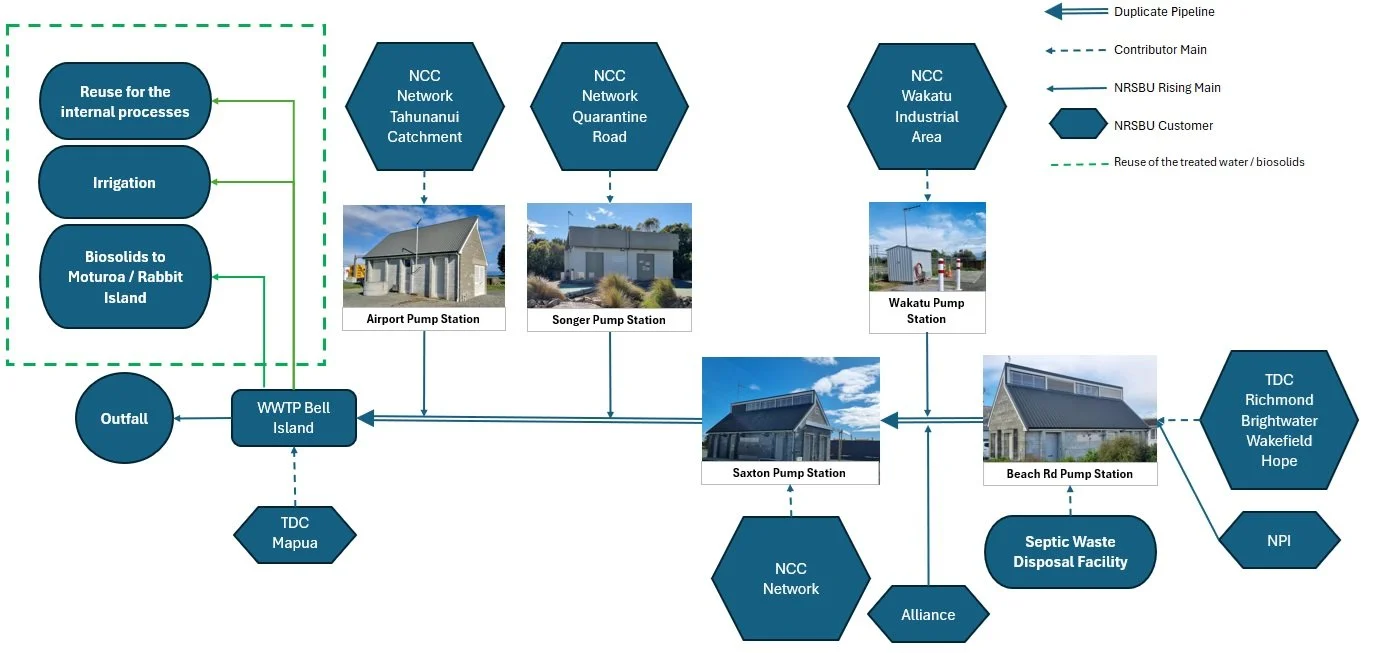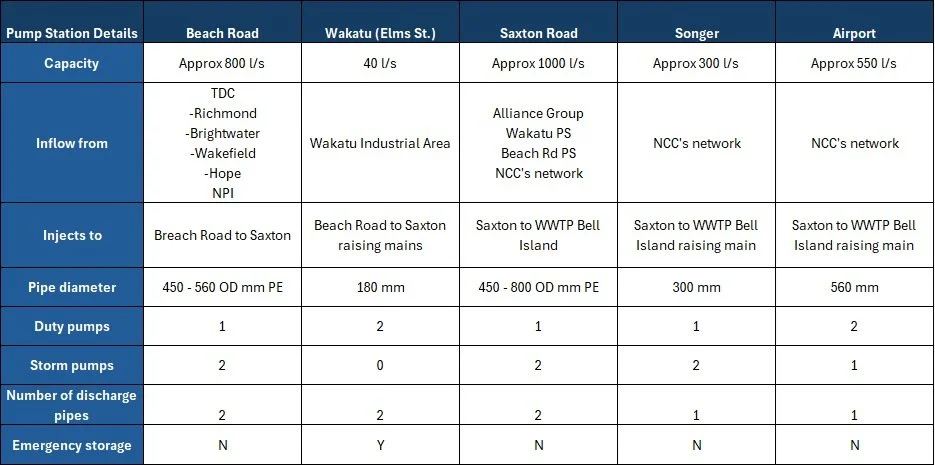
Pump stations & Pipelines
The NRSBU operates five pump stations. There are linkages between pump stations ie Wakatu pumps into the Richmond to Saxton rising main, Songer Street pumps into the Saxton to Bell Island rising main, the Saxton acts as a booster for the Richmond/Wakatu pump stations and the Saxton and Airport have a common rising main across the estuary to Bell Island. All pump stations have SCADA and flow monitoring installed.
The scheme comprises five pump stations:
Beach Road (Richmond)
Saxton Road (Stoke)
Songer Street (Stoke)
Airport (Stoke/Tāhunanui)
Wakatu (Stoke Industrial)
Pump Stations
Pump Station details
Regional Pipelines
The regional pipelines consist of rising main component varying from 150mm to 800mm diameter rising mains that link the five pump stations, to the treatment, the biosolids pipeline, and the 1,200 diameter outfall pipeline and two diffuser pipelines.
The total length of pipes is just over 155km. The pipes are mainly made of HDPE due to environmental and construction conditions.
Pipeline details
Treated wastewater is discharged to the Waimea Inlet on the first three hours of an outgoing tide. The outfall system consists of a 1200 mm diameter concrete pipeline (498 m long) with two HDPE diffuser strings (119 m long and 95 m long) and outlet riser pipes (100 mm diameter) spaced 1.7 m apart along the diffuser. This pipeline is attached to a tidal storage basin at the WWTP. As per the resource consent (RM171238) the average daily discharge of treated wastewater to the inlet shall not exceed 20,000 m3/day, while the maximum volume of treated wastewater over any 24-hour period shall not exceed 25,000 m3.
PUMP STATIONS & PIPELINES
Other pages in this section


